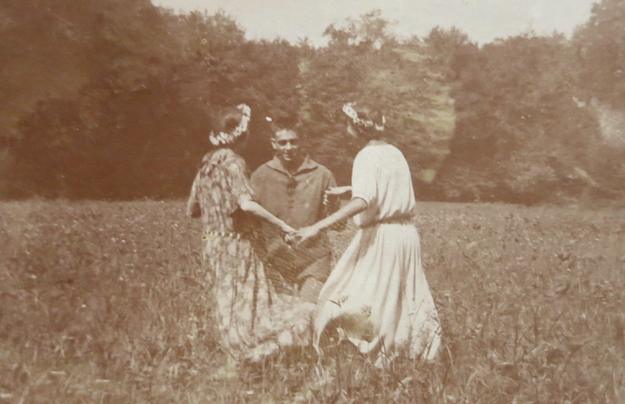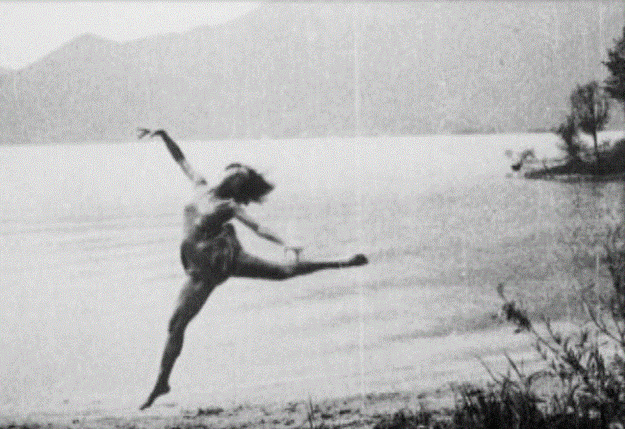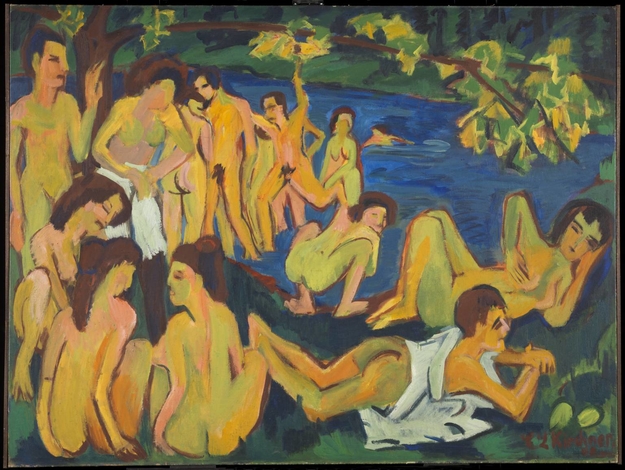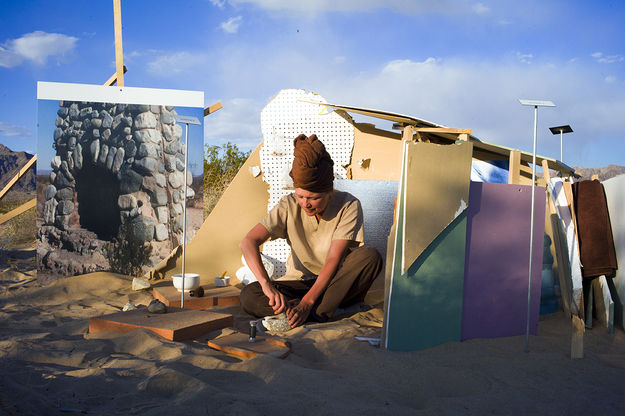Lebensreform and contemporary art practice
Vegetarianism, growing organic food and spending more time outside amongst nature… sound familiar? Indeed, these have become increasingly common happenings over the last year. Instead of buying it from the shop, people have been making their own bread and revelling in the knowledge of sourdough starter, and daily walks to the park have become a much-needed relief from the monotony of the four walls of our bedrooms. There has been an overwhelming sense that the forced collective pause to our normal lives has made us re-evaluate our shared impact on the planet and the toll that the constant demands of our lives have taken on our mental health. In a small way, it seems that we have been unknowingly participating in a contemporary back-to-nature reform movement.
The original hippie movement?
But this is by no means the first time that the West has consciously rediscovered nature. Across the German-speaking regions of Europe, the turn of the twentieth century saw the emergence of the Lebensreform (life reform) movement, responding to the dramatic changes brought on by the Industrial Revolution over the preceding decades, including rapid industrialisation and urbanisation. The movement was by no means homogenous, finding resonance across the entire political spectrum, from the utopian socialist left to the National Socialist far-right, with both sides finding aspects of this way of life that suited their respective political philosophies. It was also not without precedent, with its roots in earlier forms of European occultism, including the hermetic traditions of the medieval period and Indian religious practices.
Whilst the movement was far-reaching and diverse, its most well-known activities were concentrated around a cooperative colony on the Monte Verità, a hill near Ascona in Switzerland. It attracted figures such as the writer Herman Hesse, psychoanalyst Carl Jung, avant-garde artists such as Hugo Ball and Paul Klee, and influential dance practitioners including Mary Wigman and Rudolf von Laban. Away from the temptations and vices of the modern city, these freethinkers became vegetarians, practised nudism, rejected drugs, tobacco and alcohol, and practised a strict code of morality. As well as being a centre of Lebensreform activity, the members of the Monte Verità colony brought with them their artistic pursuits. So the site was also a hub of interdisciplinary exchange. As well as being a cradle of cultural ideas, the alternative lifestyle of this band of intellectuals was extremely influential in the development of modernist avant-garde art. This influence is displayed explicitly in the nude figures situated in peaceful landscapes of the German Expressionists and the fantastical compositions of Mondrian’s early work.
Ruchama Noorda
This historical movement is at the heart of the practice of para-conceptual artist Ruchama Noorda, as she often recycles aspects of Reform pedagogy and lifestyle practices into her performance and installation works. Moreover, she has a personal connection to the alternative philosophies that developed parallel to the Lebensreform movement, such as Anthroposophy, which postulates a parallel spiritual world accessible by us by the process of spiritual discovery. In addition, Noorda understands the philosophy behind Lebensreform from a first-hand perspective. This is because she was, in fact, raised in an Anthroposophical household and educated in the Steiner system, which approaches learning in an integrated and holistic manner, and focuses on developing creativity and imagination with alternative teaching methods.
Rather than seeing her work as a mere illustration of the life reform movement, she claims that her work functions literally as a literal séance, mining and displaying the forgotten histories of historical reform movements. She also views her practice as a way to assess the relevance of alternative aesthetic-spiritual lifestyles, exploring how they were reworked by groups inspired by Lebensreform, such as the Californian counter-cultural movements of the 1960s.
Diopharma
One such work that demonstrates Noorda’s approach is Diopharma (2014). Both performance and an installation, Diopharma was mounted in a remote location in the Californian desert. In this makeshift hut, she ground up earth samples, plant material, as well as fragments of built structures which were taken from abandoned experimental utopian colonies, including Monte Verità, a former commune called Walden in the Netherlands, and a failed socialist colony called Llano del Rio in Southern California. After collecting this ground-up material, she compressed it into small medicinal pills. These pills were then displayed in plastic ziplock bags, alongside a life-size photograph of a chimney stack from the Llano del Rio colony, which Noorda says functions as a two-dimensional alchemist oven. This piece combines recycled Lebensreform practices, including retreating into nature and concocting natural medicines, with physical references to historical sites of the movement, embodied by the material traces of locations of Lebensreform activity.
Whilst drawing attention to the widespread influence of the Lebensreform movement across the Western world, artworks such as Diopharma also make us think about the significance of these alternative lifestyles in contemporary society. By reflecting on the last year, I think it is safe to say that back-to-nature philosophies such as those promoted by Lebensreform are as relevant as ever.



